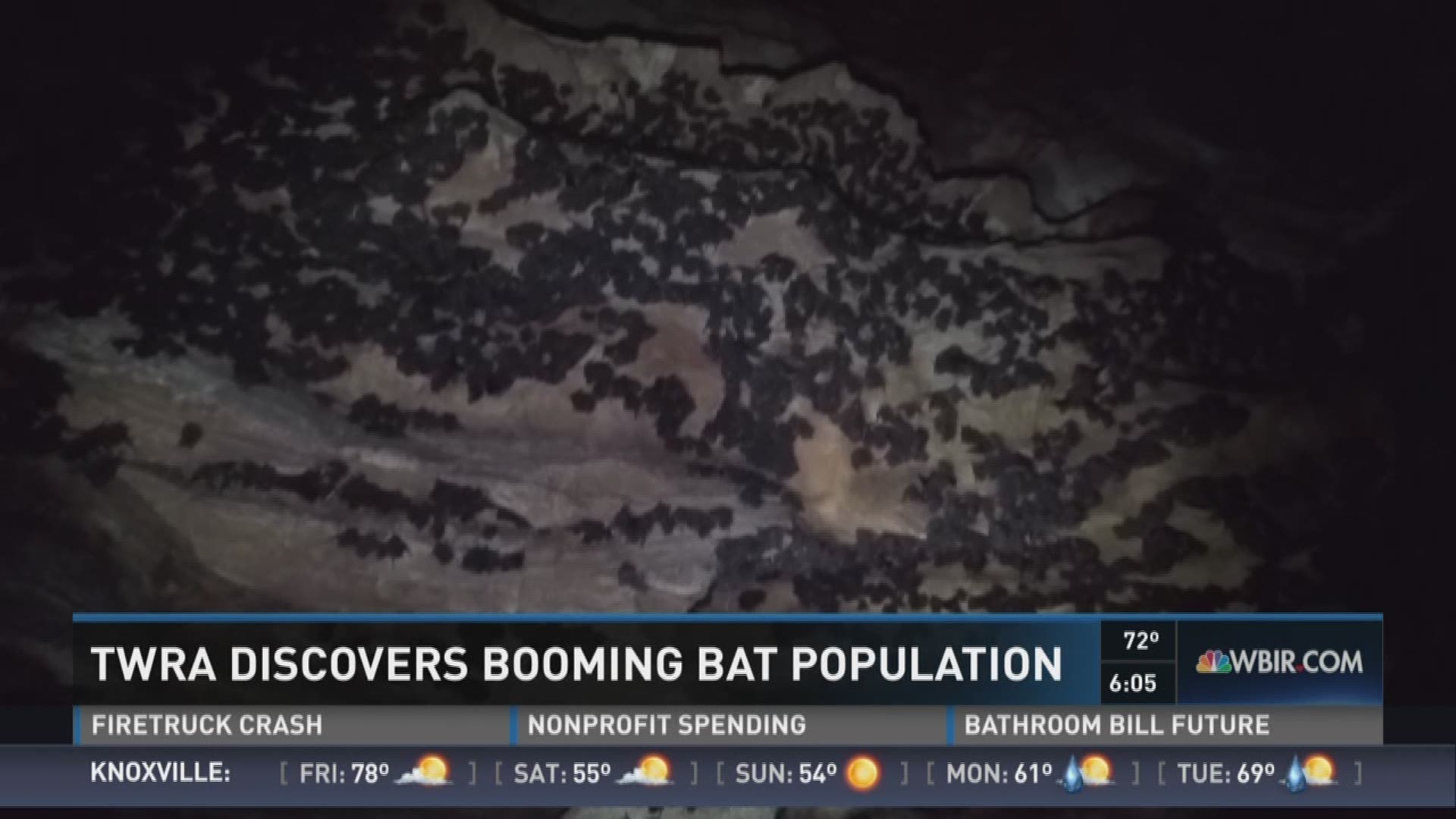Nearly 130 feet into the earth, the Tennessee Wildlife Resource Agency made an exciting discovery this week. Biologists from the agency rappelled into the Rattlin’ Pit cave in Cocke County.
"It's a cave we've known about for several years,” said Chris Ogle, TWRA Biologist. “I think 15 years ago was the last time a biologist went in there and he actually had to be rescued out, so we hadn't gone in."
Ogle’s team went looking for endangered Gray bats, a state and federally endangered species. At least check, 16,000 were hibernating for the winter there.
“We ended up finding almost 90,000 bats in the cave, which makes it a Tier 1 priority Gray bat cave for the state of Tennessee,” said Ogle.
He said they found the bats hibernating in clusters on the walls of the cave – there were so many, they only explored 10 percent of the cave before leaving for fear of waking the creatures.
Ogle said it’s an exciting discovery for the health of the population. Gray bats hibernate for the winter in only four known major caves in Tennessee. The other three major caves contain populations of approximately 300,000.
This discovery brings the population to 1.2 million, similar to levels where they were first listed as endangered.

Gray bats were scheduled to be removed from the endangered species list, Ogle said, before the often-fatal White Nose Syndrome was found in Tennessee. It causes mold to grow on the snout of bats, and is comparable to a head cold in humans. However, it can awaken bats from hibernation, putting them at risk.
"They've only got a small fat reserve to last them all winter,” said Ogle. “So every time they wake up, it depletes that fat reserve, so eventually it will starve them to death.”
Ogle said Gray bats are found in caves across the Southeast, and Grays are less vulnerable to White Nose than others. Still, he said this potential population recovery is huge.
“Bats are very important,” said Ogle. “They eat billions of insects every night, including mosquitos, and something a lot of people don’t think of is moths.”
“They’re an important part and if they were taken out we might be overrun with bugs, who knows,” he said.
TWRA will continue to monitor the bat population in the Rattlin’ Pit cave every two years in the winter.

